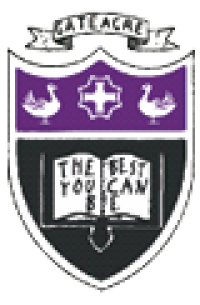Our Intent, Implementation & Impact
Intent: Our purpose and ambition
-
To be active physically, demonstrating knowledge and understanding mainly through physical activity.
-
To engage in activities that develop cardiovascular health, flexibility, muscular strength and endurance.
-
To develop independence through problem-solving physical challenges, evaluating, modifying technique and consolidating skills through practise and repetition.
-
To promote health awareness and the value of adopting a healthy lifestyle.
-
To instil a sense of good sportsmanship, and encourage recognition of other pupils’ contribution.
-
To develop leadership skills, responsibility and self-awareness.
-
To support the development of self-esteem through the development of physical confidence and helping pupils to cope with both success and failure in competitive and co-operative activities.
-
To develop skills as a team player, including praise for others and motivation skills.
-
To recognise and follow relevant rules, laws, codes, etiquette and safety procedures for different activities or events, in practice and during competition.
Implementation: Design, Pedagogy and Assessment
Sequencing
Each SOL has had careful consideration into the order that topics (and lessons within each topic) are taught. Knowledge is delivered and accumulated in a logical, cumulative progression.
Building Blocks
Each year work is completed that builds on the previous year’s practical work. SOL reflect increasingly difficult tasks, building and developing previous learning.
TEEP
All lessons are delivered using the TEEP cycle and the underpinning elements of good instruction. The latest research and principles that form part of the science of learning are bolted on to this model.
Retrieval Practice
Students are given the opportunity to revisit exam content. Interleaving is used to teach many practical elements. Low stakes quizzes and knowledge organisers also assist students.
Differentiation & Challenge
All students are challenged through the practical elements of the lessons. Difficult concepts within CN and BTEC Sport are broken down, scaffolded and modelled according to Rosenshine’s principles.
Assessment & Feedback
Assessment is clearly focused and links to the ABCD booklet. Assessments are planned to ensure high validity and reliability. They feedback into teaching where appropriate and build on previous assessments points.
Literacy & Numeracy
There is a clear focus on learning new concepts. Opportunities to develop numeracy are taken through both practical lessons at KS3 and throughout L2 and L3 courses.
Cultural Capital and SMSC
Opportunities are planned within all schemes of work for students to advance their cultural and social capital and develop as individuals on a spiritual and moral level. This is explicit to students and is seen throughout many practical tasks.
Linking Curriculum to Careers
BTEC Sport in year 12 specifically looks at careers in Sport, what the application process looks like and how to approach it. It also gives students interview practice and a chance to reflect on careers.
IMPACT: Attainment, Progress, Knowledge, Skills and Destinations
-
The vast majority of pupils meet or exceed their expected progress in Physical Education.
-
The very large majority of pupils meet or exceed their expected outcomes in Physical Education (external qualifications).
-
Pupils are well-prepared for the next stage of their education.
-
Analysis of Physical Education outcomes and pupil progress indicates that there is little statistical significance between key groups.
-
Healthy Active lifestyles, leadership, teamwork and physical activity is embedded across the school and feeds in to all subjects.
-
Life-skills are embedded in the Physical Education curriculum and are personalised for each pupil, especially through the L2 and L3 formal qualification courses.

